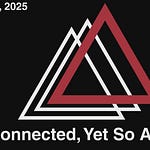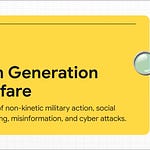We all want to do good, but are we doing it effectively? This personal reflection dives into the world of Effective Altruism, exploring why our heartfelt donations might not be making the biggest difference and how a data-driven approach can revolutionize the way we give. Discover a practical framework to maximize your impact and truly change the world.
Why 'Doing Good' Isn't Always Good Enough
We've all been there: a heart-wrenching commercial, a friend's fundraiser, a local cause that pulls at your heartstrings. We open our wallets, volunteer our time, and feel that familiar warmth of 'doing good.' And it's a beautiful feeling, isn't it? The impulse to help others, to alleviate suffering, is one of humanity's finest traits. But what if I told you that our good intentions, while noble, aren't always enough? What if the way we've been taught to give, or the causes we instinctively gravitate towards, aren't actually creating the greatest possible impact?
This isn't to say your efforts are wasted, far from it. It's about asking a tougher question: Are we doing the *most good* we can with our limited resources? I've often grappled with this myself, wondering if my donations were truly making a dent, or if they were just a drop in an ocean. The truth is, our empathy can sometimes mislead us, drawing us to causes that are visible or emotionally resonant, but perhaps not where our dollar or hour will achieve the greatest marginal good. It’s a challenge to our deeply held beliefs about charity, but one that, I believe, is essential for truly making a difference.
Discovering Effective Altruism: A Path to Real Impact
My own journey to understanding this dilemma led me to a movement called Effective Altruism (EA). It’s a philosophy that, at first glance, might seem counter-intuitive or even cold. But it's profoundly powerful. EA isn't about ditching compassion; it's about making our compassion as impactful as possible. Thinkers like Peter Singer have been instrumental in shaping this idea, arguing that if we can prevent suffering without sacrificing something of comparable moral importance, then we ought to.
If it is in our power to prevent something bad from happening, without thereby sacrificing anything of comparable moral importance, we ought, morally, to do it.
– Peter Singer, "Famine, Affluence, and Morality"
What this means in practice is using reason and evidence, not just emotion, to decide where our resources will do the most good. It's about asking: 'Which problems are the biggest? Which solutions are the most proven and cost-effective? And where is funding most needed?' It's a radical shift from simply donating to a familiar cause to actively seeking out the interventions that save the most lives or improve the most well-being per dollar. True altruism isn't just about feeling good; it's about doing the most good, often by making uncomfortable, data-driven choices. It’s a call to be strategic with our generosity, ensuring every ounce of our effort counts.
Your Personal Impact Blueprint: A Four-Step Guide
So, how do we apply this 'rational compassion' in our own lives? It's not about becoming a heartless calculator, but about equipping yourself with a powerful blueprint to maximize your impact. Here's a four-step framework I've found incredibly useful:
Step 1: Where Does Your Compassion Lead? (Research & Identify) Start by looking at the big picture. What are the world’s most significant problems? This might feel overwhelming, but resources like GiveWell or 80,000 Hours have done the heavy lifting. They research global issues like extreme poverty, preventable diseases, or future existential risks and identify areas where a contribution can genuinely move the needle. Don't just react to what you see on social media; seek out the biggest, most neglected areas of suffering.
Step 2: Weighing Your Options: Impact vs. Emotion (Evaluate & Prioritize) Once you've identified key problem areas, dive into the solutions. Which interventions are scientifically proven to work? Which ones offer the most 'bang for your buck'? This is where you prioritize cost-effectiveness. For instance, sometimes a simple intervention like providing deworming medication to children or distributing bed nets in malaria-prone regions can save lives for mere pennies, offering far greater impact than a more expensive, less proven local initiative. It’s tough to set aside emotion here, but the data is your friend.
Step 3: Taking Action, Smartly (Act Strategically) Now, it’s time to act. This means dedicating your resources – whether it's your money, your career skills, or your time – to the organizations and causes that are demonstrably most effective. It might mean choosing a highly-rated charity working on global health in a distant country over a smaller, well-meaning local group. This isn't about being disloyal; it’s about being effective. Your generosity is a powerful force; direct it with precision.
Step 4: Learning and Evolving (Reflect & Adapt) The world changes, and so should your strategy. Effective altruism is an ongoing process. Keep learning, keep reading reports, and be open to adjusting your focus as new evidence emerges. What was the most effective intervention last year might be surpassed by something even better this year. It's about continuous improvement, ensuring your efforts always generate the maximum good.
This framework gives you the power to not just help, but to truly *transform*.
A Real-World Example: Making Every Dollar Count
Let me share an example to make this concrete. Imagine you're passionate about helping children. Your first thought might be to donate to a prominent local children's hospital or a national organization that supports child development in your community. These are good causes, undoubtedly.
However, applying the EA framework might lead you to a different, potentially more impactful, decision. You do your research (Step 1) and find that preventable diseases like malaria are still devastating children's lives in many parts of the world, and often with far fewer resources dedicated to them than diseases in wealthier nations. This is a massive, neglected problem.
Next, you evaluate interventions (Step 2). You discover that a charity providing long-lasting insecticidal bed nets can protect a child from malaria for years at a remarkably low cost. Or perhaps a charity distributing Vitamin A supplements can prevent blindness and save lives for mere cents. These interventions have solid, peer-reviewed evidence of their effectiveness and are incredibly cost-efficient. The impact per dollar is staggering compared to many other forms of aid.
So, you decide to act strategically (Step 3). You choose to donate to a highly-rated charity that provides these simple, life-saving interventions, knowing that your contribution isn't just a gesture, but a quantifiable force for good. You're directly contributing to saving lives and improving health in a way that maximizes your dollar's potential.
You then reflect (Step 4), staying informed about the charity's progress and the latest research, ensuring your giving remains aligned with the highest impact. This isn't just abstract ethics; it's how your generosity can tangibly change a child's entire future, making every dollar count exponentially.
We have an enormous opportunity to do good in the world, and we should use our resources as effectively as possible.
– William MacAskill, "Doing Good Better"
Go Deeper
Step beyond the surface. Unlock The Third Citizen's full library of deep guides and frameworks — now with 10% off the annual plan for new members.
Your Toolkit for a Better World: Practical Steps
Embracing Effective Altruism isn't about abandoning your heart; it's about empowering your heart with a sharper mind. It's a journey, not a destination, where we continually ask ourselves how we can do the absolute most good with what we have. This toolkit — the process of diligently researching problems, rigorously evaluating solutions, strategically allocating your resources, and consistently adapting your approach — gives you the power to make a profound difference.
It challenges us to look beyond immediate gratification or traditional giving and instead focus on what truly works, at scale. The beauty of this approach is that it transforms your generosity from a hopeful gesture into a powerful, data-driven engine for change. So, I encourage you: start with the research, evaluate with an open mind, act deliberately, and never stop learning. Your potential for positive impact is immense, and by applying this framework, you can truly contribute to building a better, more just, and healthier world for everyone.







